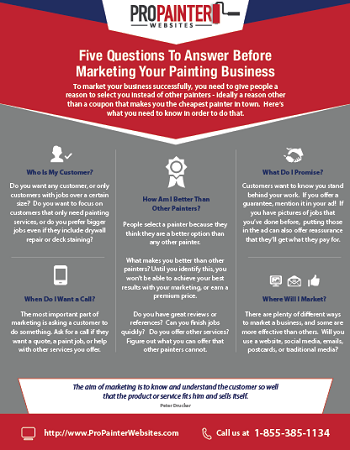Examine The Function Of Seasonal Factors In The Success Of Business Exterior Paint And Uncover The Very Best Times To Protect Long-Term Outcomes For Your Job
Examine The Function Of Seasonal Factors In The Success Of Business Exterior Paint And Uncover The Very Best Times To Protect Long-Term Outcomes For Your Job
Blog Article
Published By-Burnham Decker
When you're intending an industrial outside paint task, seasonal factors can make or break your results. You'll wish to think about exactly how temperature and humidity impact paint application and drying times. Selecting the ideal period can guarantee your paint sticks effectively and lasts much longer. But which seasons are absolutely the very best for this type of job? Allow's check out the key elements that can impact your job's success.
The Impact of Temperature on Paint Application
When you're planning a commercial exterior painting project, the temperature level can significantly influence how well the paint sticks and dries out.
Ideally, https://www.southernliving.com/home/colors/stop-painting-brick-white intend to paint when temperatures vary between 50 ° F and 85 ° F. If it's too cold, the paint may not cure appropriately, bring about problems like peeling off or breaking.
On the flip side, if it's also hot, the paint can dry too rapidly, avoiding correct bond and leading to an irregular surface.
You should likewise take into consideration the time of day; early morning or late afternoon uses cooler temperatures, which can be much more desirable.
Always check the maker's referrals for the particular paint you're using, as they often offer advice on the suitable temperature level range for ideal results.
Moisture and Its Effect on Drying Times
Temperature isn't the only ecological variable that affects your commercial exterior paint job; humidity plays a substantial function as well. High moisture degrees can slow down drying out times significantly, impacting the total top quality of your paint job.
When the air is saturated with wetness, the paint takes longer to heal, which can bring about issues like bad bond and a greater risk of mildew growth. If you're repainting on a specifically damp day, be gotten ready for extensive delay times in between layers.
It's important to monitor local weather conditions and plan accordingly. Ideally, aim for humidity degrees in between 40% and 70% for optimum drying out.
Keeping these factors in mind guarantees your job stays on track and delivers a lasting coating.
Best Seasons for Commercial Exterior Paint Projects
What's the very best season for your business outside paint jobs?
Spring and very early autumn are usually your best choices. Throughout these seasons, temperatures are light, and humidity levels are usually reduced, creating perfect conditions for paint application and drying out.
Avoid summer season's intense heat, which can create paint to completely dry also quickly, resulting in poor adhesion and surface. Similarly, winter season's cool temperature levels can prevent correct drying out and curing, taking the chance of the durability of your paint job.
Go for days with temperature levels in between 50 ° F and 85 ° F for optimal outcomes. Remember to examine the regional weather report for rain, as wet problems can ruin your task.
Planning around these variables guarantees your paint project runs smoothly and lasts much longer.
Final thought
Finally, planning your commercial outside painting projects around seasonal considerations can make a substantial difference in the outcome. By organizing painting walls and ceilings the same color during the ideal temperature levels and humidity levels, you'll ensure better bond and drying out times. Bear in mind to watch on neighborhood weather report and choose the right time of year-- springtime and early loss are your best options. Taking these steps will help you achieve a durable and expert finish that lasts.
